Our product SH-1, a new antibacterial and fresh-keeping packaging material, is not better than traditional fresh-keeping materials, but different. We have five characteristics in one: low oxygen permeability, high concentration of CO ₂ negative ions, high water locking ability, and food grade, which subverts traditional principles.
Not afraid to conduct experiments, visible results
One fresh guard bag ≈ one natural small refrigerator
Experiment 1:
The following presents the results of a test conducted by a Guizhou customer on an antibacterial preservation bag. The test involved comparing the freshness of items stored in the bag at around 26°C room temperature over a period of five days, with an additional comparison photo taken on the sixth day to illustrate the preservation effectiveness.
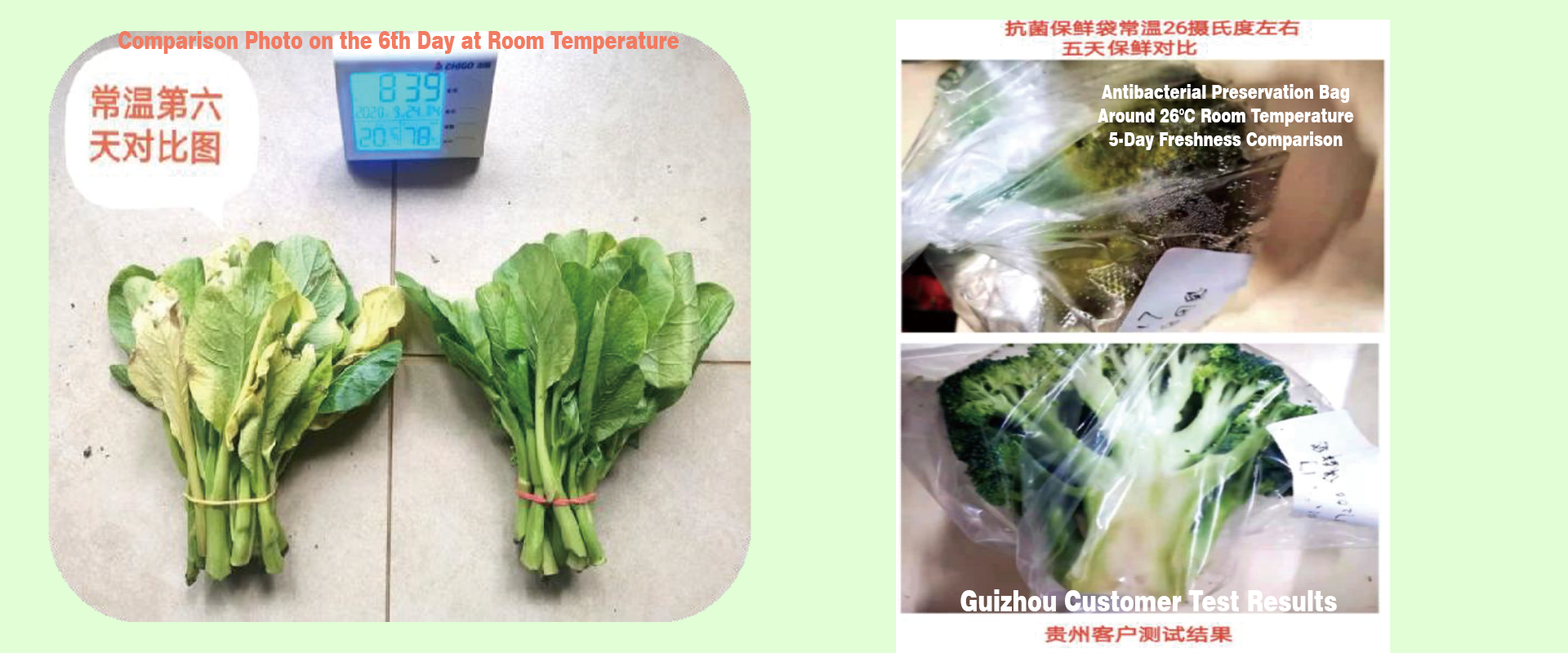
Experiment 2:
This statement summarizes a comparison test where red dragon fruit was insulated for 9 days at a room temperature of approximately 25 degrees Celsius, focusing on its anti-corruption properties.
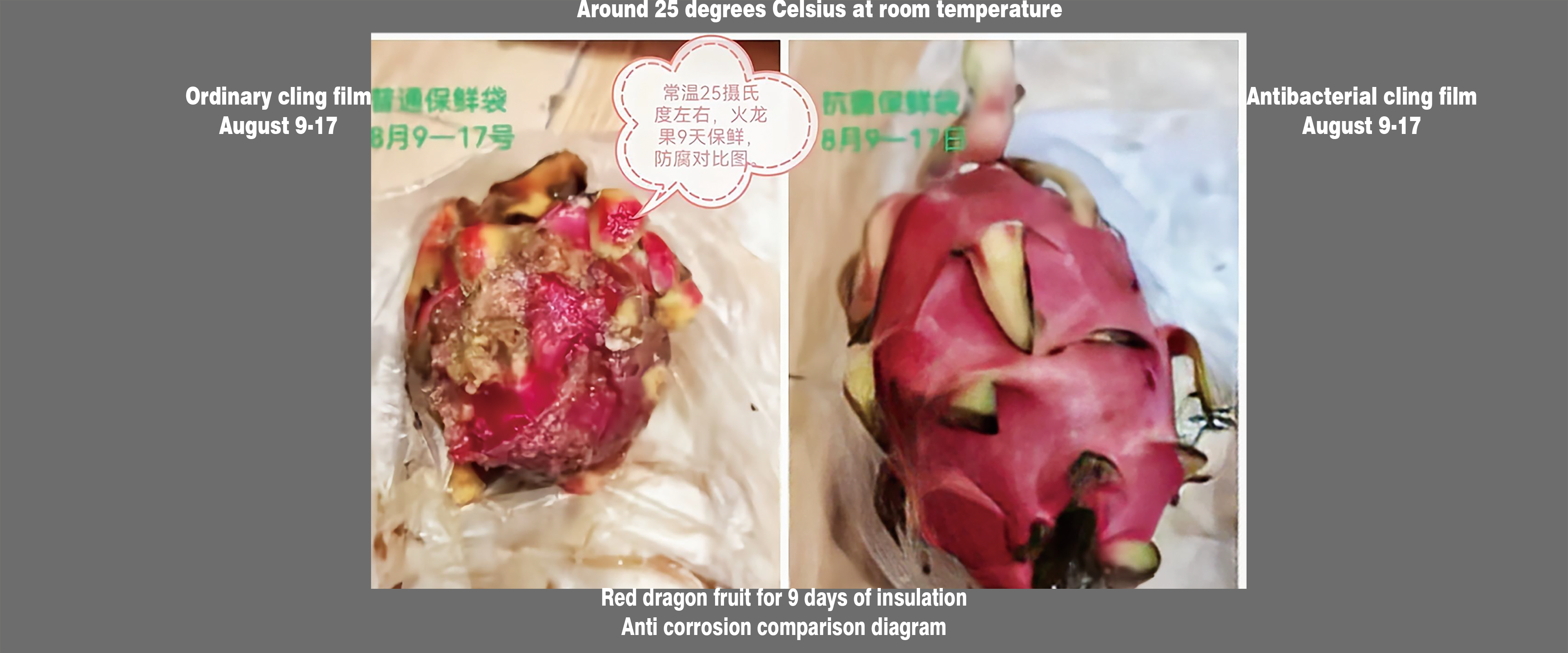
Experiment 3:
Changes in soluble solids of cherries during storage.
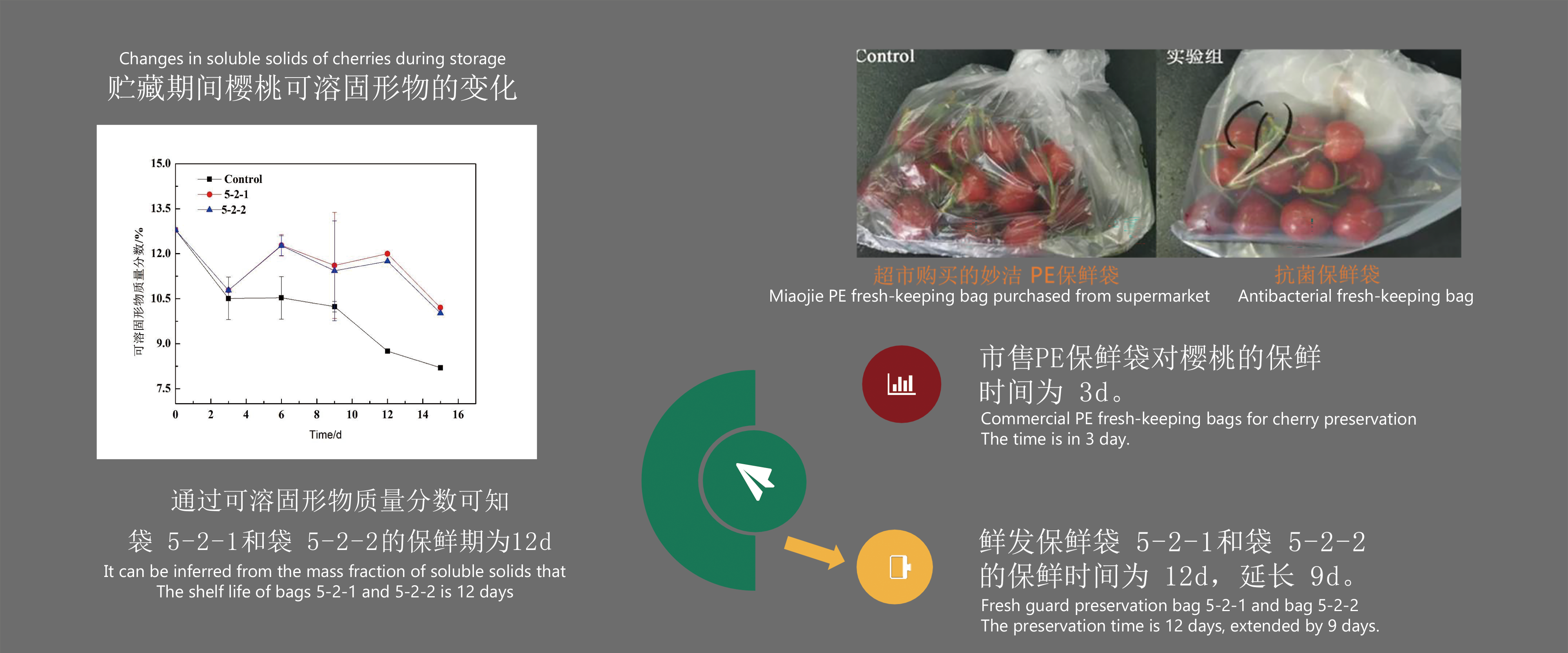
Experiment 4:
This text compares antibacterial fresh-keeping bags with commercial PE fresh-keeping bags, focusing on the changes in total bacterial count in pork during storage.
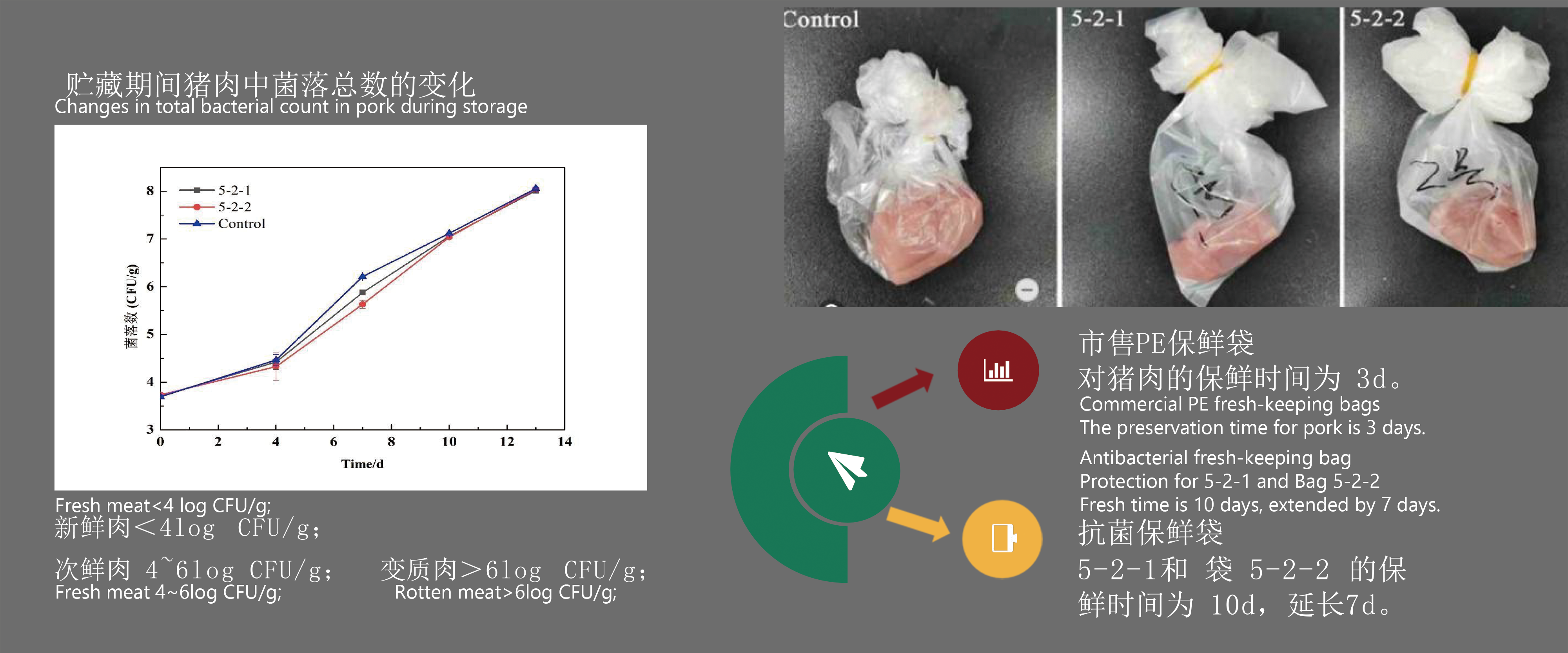
Pork preservation experiment.
1. Grouping.
Experimental group: 5-2-1, 5-2-2; Control group: Miaojie PE fresh-keeping bags purchased from supermarkets.
2. Experimental methods.
2.1 Pork Processing and Packaging.
Sterilize the cutting tools and cutting board using 75% alcohol wiping and UV irradiation for 30 minutes. Remove visible fat and fascia from the pork (commercially available pork tenderloin) in a sterile operating table. Cut the pork into 2x2x2 cm cubes (approximately 10g), wrap them with plastic wrap, and store them in a tray under 4C conditions. At positions 0, 4, and 7, respectively Detect various indicators on 10 and 13 days, with 2 parallel experiments in each group.
Packaging of pork with different fresh-keeping bags.
2.2 Measurement indicators.
2.2.1 pH value.
Refer to GB 5009.237-2016 "Determination of pH value in food".
Method to determine the pH value of pork.
2.2.22 Thiobarbituric acid active substances (TBARS).
Refer to GB/T 35252-2017 to determine the TBARS value of pork.
2.2.3 Total bacterial count.
National standard GB/T 9695.5-2008, the pH value of first grade fresh meat is 5.8~.
6.2. The pH of second grade fresh meat is between 6.3 and 6.6, and the pH of spoiled meat is greater than 6.7.
According to the change in pH value, it can be seen that the preservation time of ordinary PE preservation bags on the market for pork is 7 days, the preservation time of antibacterial bag 5-2-1 is 13 days, extended by 5 days, and the preservation time of antibacterial bag 5-2-2 is 10 days, extended by 3 days.

Experiment 5:
Comparison of seven days at room temperature.
Preservation and anti mold effect.
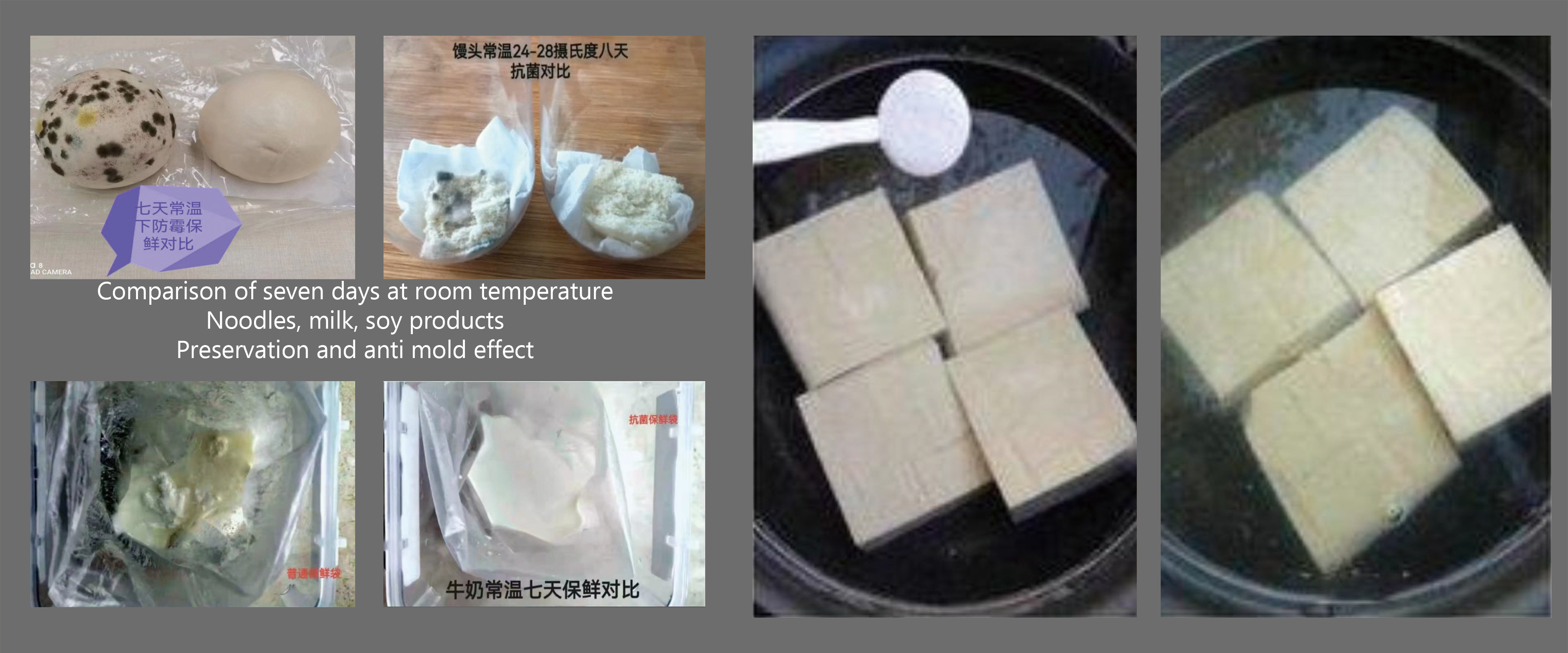
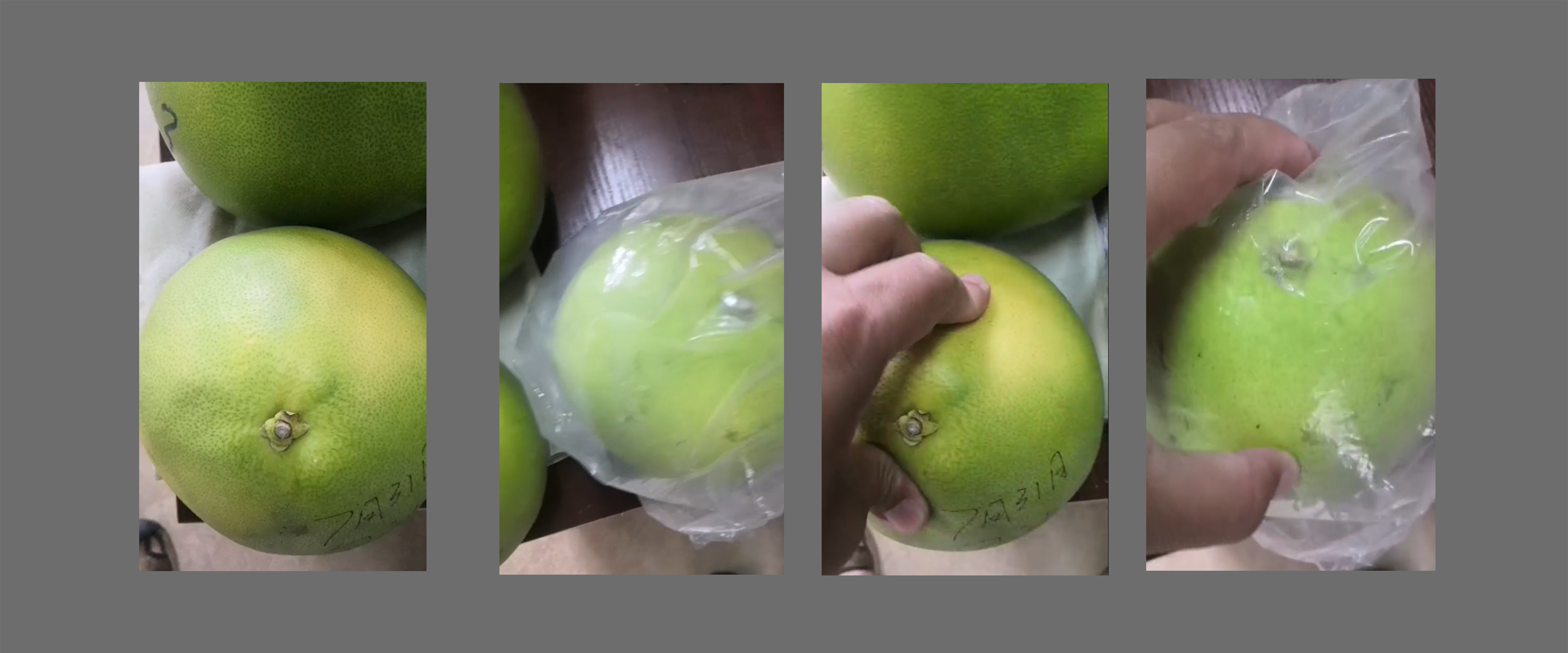
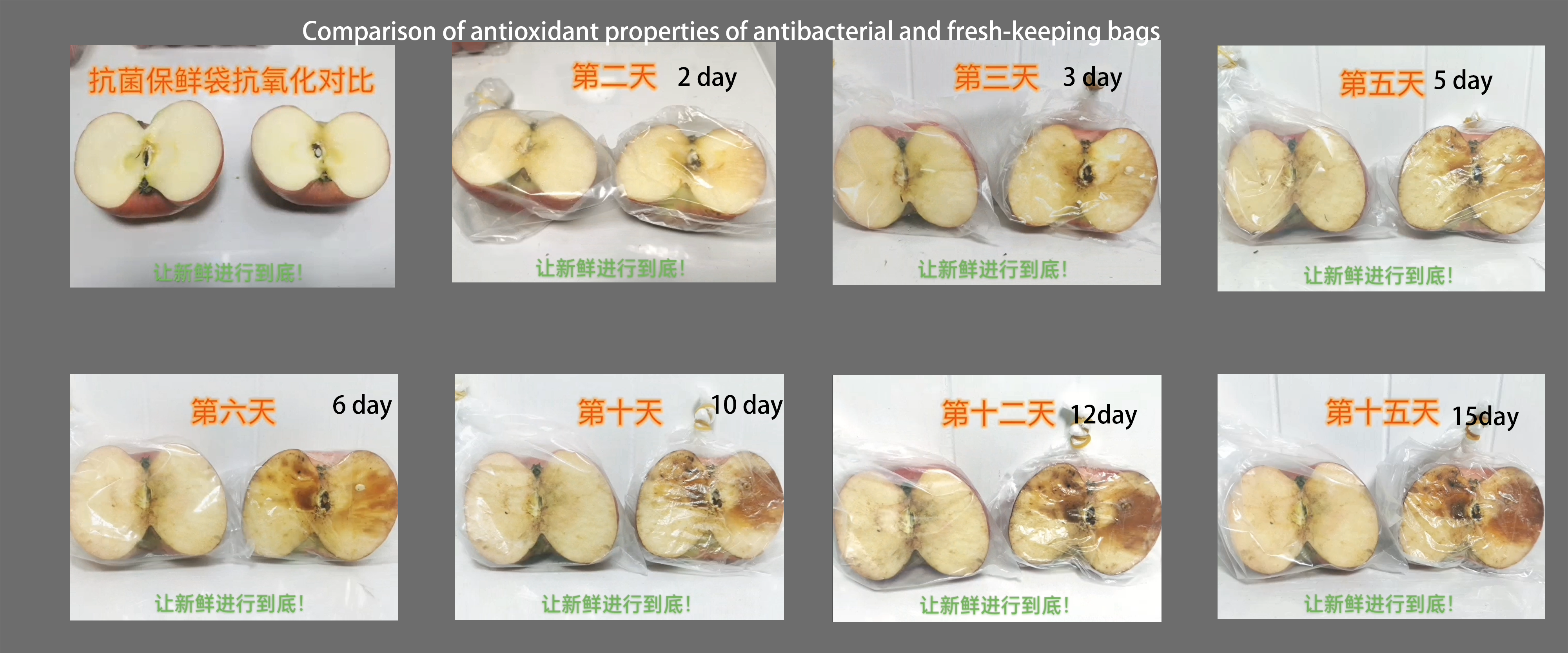

Experiment 6:
Flowers category
Select a package of newly arrived flowers, unpack them, cut the roots, ensure that the flowers have fresh water absorbing ports, remove flowers that are already not good, and avoid affecting the experimental results.
Please welcome the protagonist of this experiment, "Exclusive Research and Development of Freshness Preservation Bag," to make a dazzling appearance. Half of the flowers will be packed into the bag, and the roots will be tied tightly.
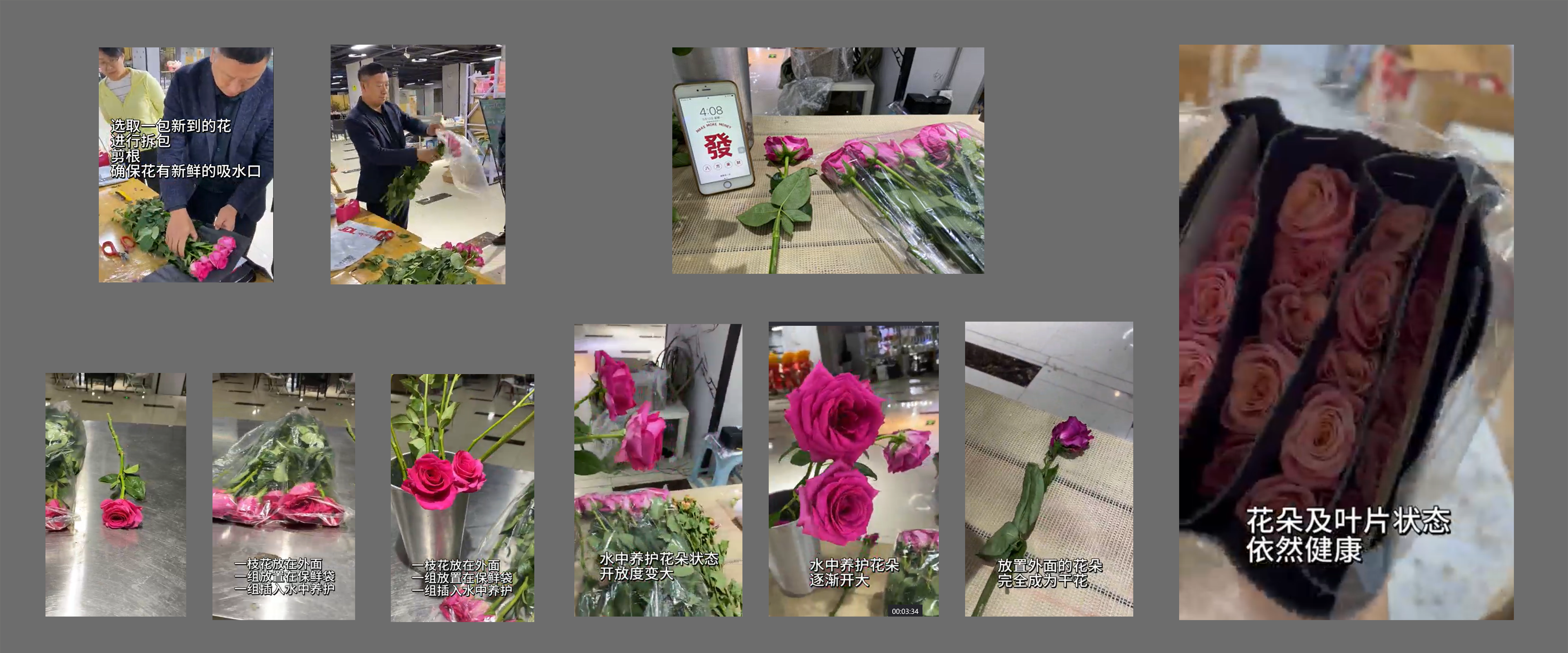
Experimental setup:
A flower placed outside.
A set placed in a fresh-keeping bag.
A set of inserted water maintenance.
May 13th 16:06
Fresh flower preservation experiment begins.
record:
first day
The flowers placed outside are severely dehydrated.
Put the flowers in a fresh-keeping bag. The color of the leaves is normal, and the flower heads are not yet open.
Maintaining the state of flowers in water and increasing their openness.
The third day
The water nurturing flowers are in good condition and have a certain degree of openness.
Placing flowers outside will worsen their withering.
Fresh flowers in the fresh-keeping bag, with fresh leaves and unopened flower heads.
The fourth day
The flowers in the water are gradually blooming for maintenance.
The flowers placed outside have completely become dried flowers.
Flowers placed in plastic bags, some petals have slight decay, while the leaves remain fresh.
The Fifth Day
Flowers nurtured in water, in a state of full bloom.
Place the flowers outside and make them completely dry.
The flowers placed in the fresh-keeping bag have some petals that are slightly rotten, and the leaves are still fresh. The flower buds have not bloomed yet.
The sixth day
On the first day of folding and storing the flowers in a plastic bag with water, the flowers had a high degree of openness, and one flower had drooping due to rotting petals.
The flowers that have been nurtured with water remain strong and resilient.
The seventh day
On the second day of water cultivation in the fresh-keeping bag group, the openness of the flowers increased.
The flowers that have been nurturing water are beginning to decline.
The eighth day
On the third day of watering in the fresh-keeping bag group, the previously rotten petals of the flowers began to decay, while the healthy flower buds were in good condition.
The flowers that have been nurturing water have entered a period of decline.
Experimental Summary
(1) The fresh-keeping bag effectively extends the shelf life and does not require water maintenance, but its impact on the flowering period is unknown.
(2) There is no need to use it on the sales end, use cling wrap on the sales end.
In order to enrich the experimental scene, we contacted the Yunnan base and started using fresh-keeping bags from the source, and sent the experimental products to the cold storage for observation.
We received flowers packaged in plastic bags at the base.
Fresh leaf condition, no dehydration, observe flower condition, no dehydration, no blooming.
Store in cardboard boxes in the cold storage.
After six days of observation, the flowers placed in the cold storage are in good condition, and the leaves are in good condition.
Eight days later, I came to the cold storage again for observation. Most of the flower buds were normal, but a few had rotten petals. The leaves and roots were still fresh, and there was slight moisture in the packaging area.
Experimental Summary:
Fresh bags are more suitable for use at the source.
Can effectively extend the delivery time.
But regular package inspection is required.
Observe the moisture and valve decay situation.
This product can continuously release reactive oxygen species such as oxygen anions and hydroxyl radicals, which can kill various pathogenic microorganisms and oxidize and remove ethylene. Its unique material slow-release technology makes preservation more precise, sustainable, and effective. The product is widely used in industries such as fruits and vegetables, aquatic products, meat, pre packaged foods, flowers, dairy products, etc. Especially for perishable or perishable foods that are difficult to store, fruits and vegetables have a very good preservation effect. Using this product can bring good economic benefits to enterprises by reducing costs and increasing efficiency. We provide innovative preservation solutions for our customers, ensuring freshness to the end





